
Case #435 - January, 2017
An adult patient with right eye and eyelid irritation sought medical attention at an eye clinic. Upon examination, living organisms and what appeared to be egg cases were identified on the patient's eyelids and eyelashes. A digital photograph (Figure A) was submitted to the DPDx Team for confirmation of the presence of ectoparasites. Specimens were requested by the DPDx Team to allow for a more specific and accurate diagnosis. Submitted were two organisms and a few of the egg cases. Figures B-D, taken with a dissecting microscope, show the organisms that were submitted which measured approximately 1.6 millimeters in length. Figures E and F, taken with a compound microscope at 100x and 200x magnification respectively, show two of the egg cases which averaged 700 micrometers in length. What is your diagnosis? Based on what criteria?
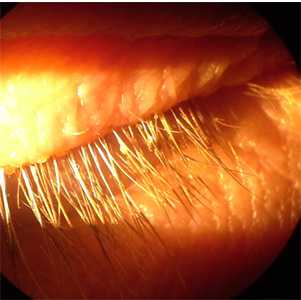
Figure A
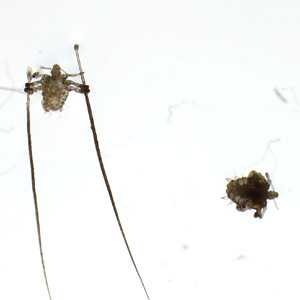
Figure B
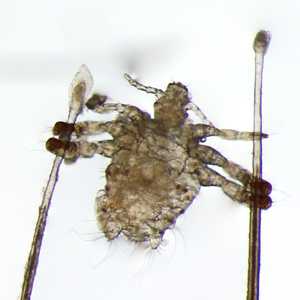
Figure C
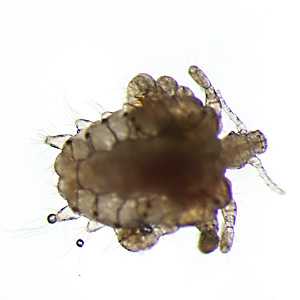
Figure D
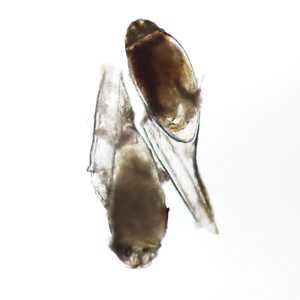
Figure E
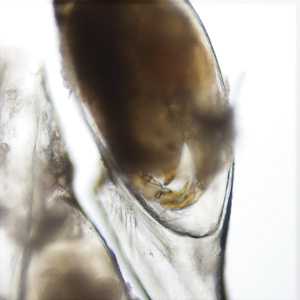
Figure F
Case Answer
This was a case of pthiriasis caused by Pthirus pubis (the crab louse), an ectoparasite. Morphologic features shown included:
- presence of nits (eggs) on the eyelashes and with the submitted specimens.
- dorsoventrally flattened arthropod with claw-like ends on the second and third legs.
- one louse still attached to a hair shaft (typical presentation).
Although these lice are normally found in the pubic or perianal area, they may also be found on hairs in the armpit, moustache, chest and eyelashes. An accurate diagnosis of the type of lice found on eyebrows or eyelashes is important for proper treatment.
For more information on pthiriasis, please visit https://www.cdc.gov/dpdx/pthiriasis/index.html
This case and Figure A were kindly provided by Solomon Eye Physicians & Surgeons, Bowie, Maryland.
Images presented in the monthly case studies are from specimens submitted for diagnosis or archiving. On rare occasions, clinical histories given may be partly fictitious.
DPDx is an education resource designed for health professionals and laboratory scientists. For an overview including prevention and control visit www.cdc.gov/parasites/.
- Page last reviewed: February 9, 2017
- Page last updated: February 15, 2017
- Content source:
- Global Health – Division of Parasitic Diseases and Malaria
- Notice: Linking to a non-federal site does not constitute an endorsement by HHS, CDC or any of its employees of the sponsors or the information and products presented on the site.
- Maintained By:


 ShareCompartir
ShareCompartir